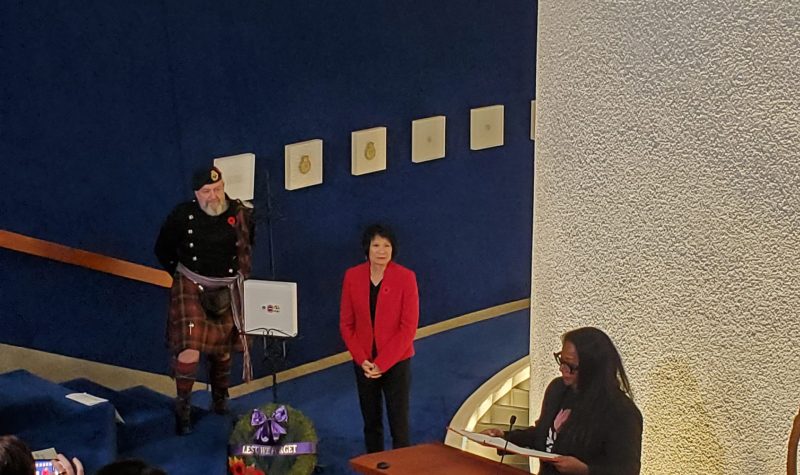It was a frosty morning at city hall today as a crowd gathered together at a sacred fire in honour of Indigenous Veterans Day.
Starting in 1994 in Winnipeg, Indigenous Veterans day is a nationally observed event that takes place every year on Nov. 8. It takes place three days before Remembrance Day to honour all of the Indigenous veterans throughout Canada’s history.
This year, the Toronto ceremony started with a sacred fire with songs from Elder Garry Sault; and around the fire were veterans and Indigenous veterans from different tours, from the Korean War to modern conflicts. When everyone was smudged, the firekeeper went around the fire to let people speak a few words about the ceremony.
“I honour my brother who was in the Merchant Marine and my other brother who served in the Korean and my nephews who served in Afghanistan,” says Sault. “Myself, I served in the United States Navy and joined Vietnam and so I would like to give them that honour.”
Following the ceremony, everyone was moved inside for speeches at the rotunda and Hall of Memory. The speakers all touched on remembering and honouring the long history of Indigenous veterans in Canada; especially when they were unable to speak for themselves.
“Indigenous people have been part of Canada's military history dating back to the War of 1812,” says Mayor Olivia Chow. “Despite their readiness to lay down their lives in service. Indigenous volunteers had to overcome many challenges…During the First World War, the First Nations were exempt from enlisting as they were not considered citizens of Canada. Despite all of that, 4000 First Nations people fought in the First World War than 300 of them, made the ultimate sacrifices and gave their lives.”
That readiness to give their lives for Canada was echoed by Chief R. Stacey Laforme of the Mississaugas of the New Credit First Nation. He says that he has “ancestors and family who fought and died wrapped in the flag of this nation.” In honour of his family and Indigenous veterans, he wrote and read out a poem he wrote about them called I love this Land.
“You were an ally shall be my brother. We were all the same colour wrapped in the flag of this nation. My blood flowed as freely as yours, mixed in the fields, one could not be distinguished from the other. Yet when we came home. When the nation's colours were removed, differences became apparent, not between you and me,” says Laforme.
After all the speeches, prayers and poems two plaques were unveiled. In honour of Indigenous veterans two plaques were made. “One is to recognize the historic and ongoing participation of First Nations, Métis and Inuit,” says Chow, while the other is to “correct some omissions.” Both will be placed in theHall of Memory for everyone to see.
To correct the omissions, the plaque called The Defenders of York acknowledges Indigenous peoples efforts in the Battle of York. It lists the regiments and the First Nations communities that participated in defending York during the War of 1812.
“The time that I was in the service and the people that I met, the ones that got killed, that I partied with. Sometimes it brings tears to my eyes, I can remember their faces so well,” says Sault. “But they're gone because they were there to serve their country to make it a better place. Or, and that's what all our veterans think. They still serve their community even after we left the service, and so that's what I do. When I look at our community, I look at it in a good way.”


